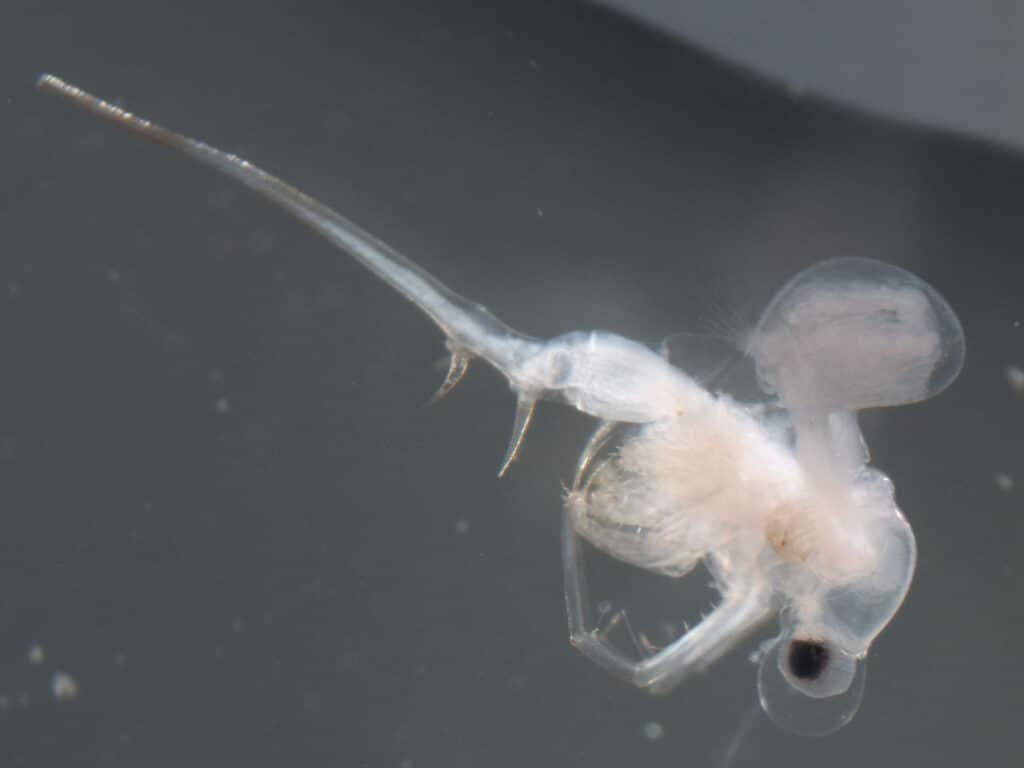
A non-native species of zooplankton has been found in another lake at the edge of the Boundary Waters Canoe Area Wilderness. The Minnesota Department of Natural Resources announced late last year that spiny water flea (Bythotrephes longimanus) had been found in Snowbank Lake, east of Ely. It’s bad news for fish, anglers, and boaters.
Spiny water flea is native to Europe and Asia, and was brought to North America in the 1980s in ballast water from ocean-going ships that traveled into the Great Lakes. It was established in Lake Superior by 1987 and first identified in Minnesota’s inland waters in 1990 at Island Lake near Duluth. Since then, they’ve been found in Voyageurs National Park and several lakes in northeastern Minnesota.
Tiny organisms, big problems
The tiny organisms can cause big problems. The primary threat is to lake ecology, as the water fleas outcompete native species for food, disrupting the bottom of the food chain. At the same time, the tough and sharp creatures are not a good fish food themselves. Research by the Minnesota Aquatic Invasive Species Research Center (MAISRC) has shown that young walleye grow slower in lakes infested with the pest.
“Smaller first-year size is related to walleye survival and recruitment to later life stages and has important implications for lake food webs and fisheries management,” the authors wrote.
In addition to its ecological effects, spiny water flea is also known as an annoyance to anglers. The organisms can cling to fishing line and other gear, fouling it.
The primary way for spiny water flea to move to new lakes is being transported by people. It can survive out of water on fishing and boating gear for up to six hours, and then colonize the next lake that gear touches.
Preventing the spread
Two years ago, researchers at the MAISRC released the result of studies into the best methods for preventing the spread. They found that wiping down fishing line, downriggers, and cables with a small cloth when reeling in at the end of a day was effective at removing the pests. Boats should be drained of all water, and livewells and bait buckets should be wiped out. Leaving gear and boats out of water and in the sun until everything is completely dry is is recommended.
Snowbank Lake is a large body of water at 4,600 acres and 150 feet deep at its deepest point. Much of the lake is designated wilderness as part of the Boundary Waters. It is a popular entry point for accessing wilderness lakes such as Disappointment and Ima. It is also a popular destination in its own right, with fishing for lake trout, walleye, northern pike, and more.
Spiny water flea was found in Burntside Lake, near Ely, in 2010. Elsewhere in northeastern Minnesota, it has been found in North and South Fowl Lakes, Caribou, Flour, Greenwood, Gunflint, McFarland, Pine, Little John and Crane Lakes, as well as in Lake Saganaga. In Quetico Provincial Park, the organisms have been confirmed in several lake, including Pickerel, Poobah, Sturgeon, and Saganagons Lakes.
More information:
- Spiny waterflea (Bythotrephes longimanus) – Minnesota DNR
- Stop the Spread of Spiny Water Flea – MAISRC
- Forest-wide Spiny Water Flea Monitoring Project – Superior National Forest
- Spiny Water Flea – National Invasive Species Information Center

